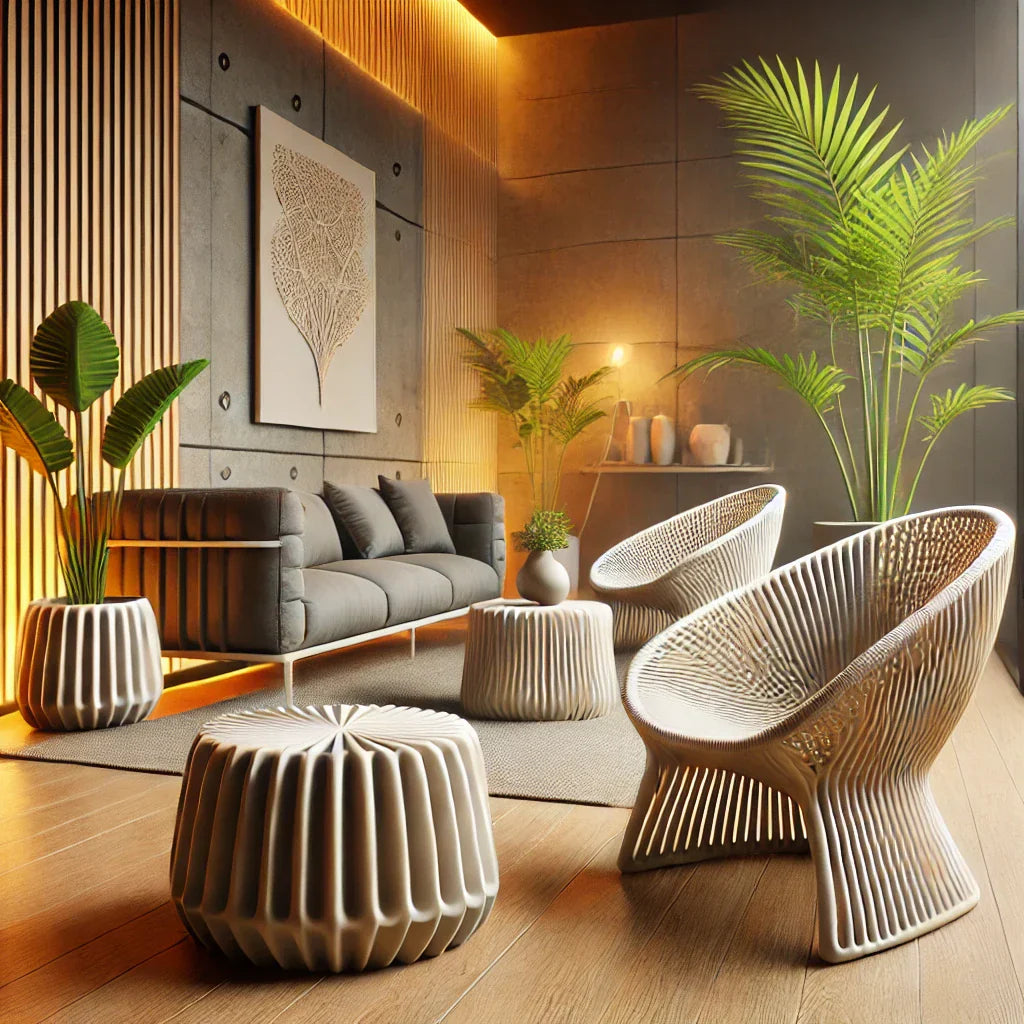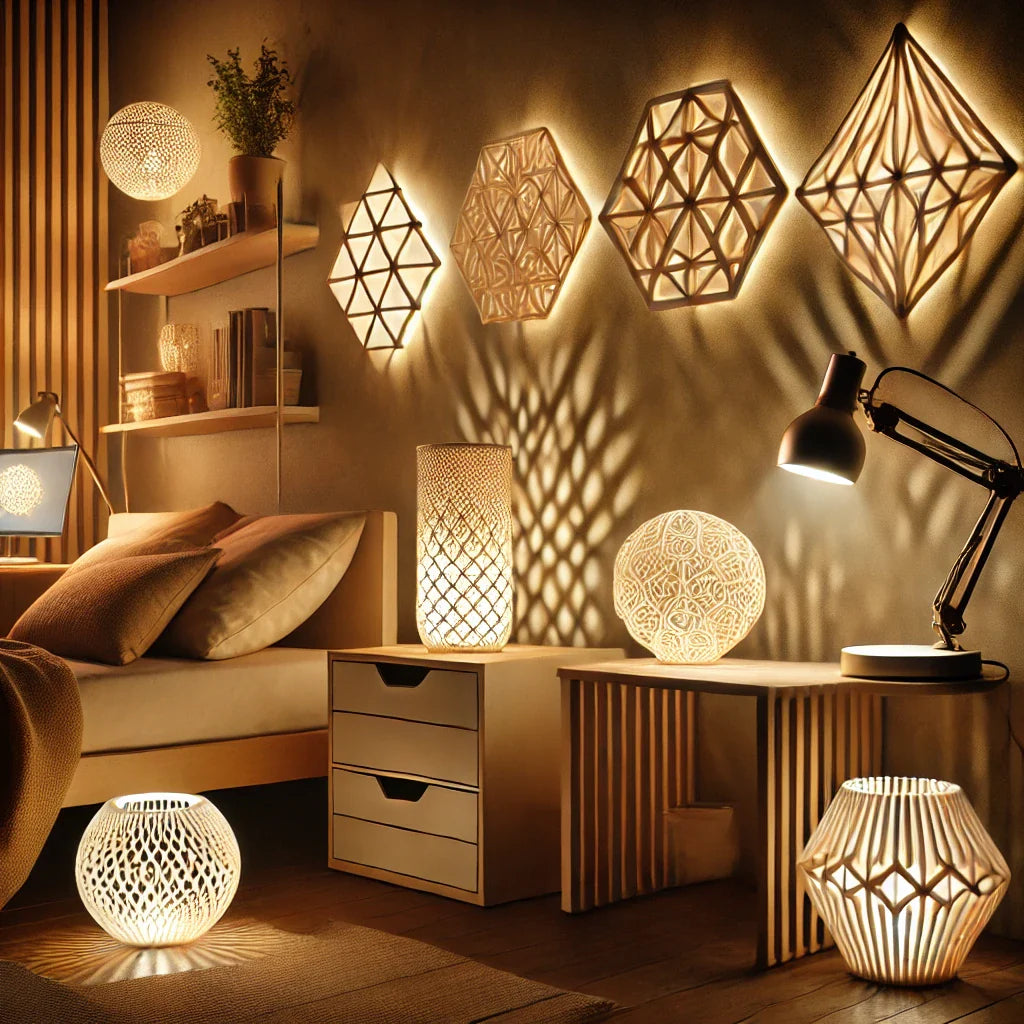In an era where sustainability and innovation converge, recycled 3D-printed furniture emerges as a beacon of eco-friendly design, offering both environmental benefits and aesthetic versatility. This fusion of technology and sustainability is poised to revolutionize the furniture industry, addressing pressing environmental concerns while catering to modern design sensibilities.
Environmental Benefits of Recycled 3D-Printed Furniture
-
Reduction of Plastic Waste: The proliferation of plastic waste is a global challenge. By utilizing recycled plastics in 3D printing, we divert significant amounts of waste from landfills and oceans, transforming them into functional furniture pieces. This process exemplifies the principles of a circular economy, where materials are continually repurposed, minimizing environmental impact. designwanted.com
-
Energy Efficiency: Traditional manufacturing processes often involve material wastage and high energy consumption. In contrast, 3D printing with recycled materials is an additive process, building objects layer by layer with precision. This method reduces material waste and requires less energy, thereby lowering the carbon footprint associated with furniture production. meblfurniture.com
-
Local Production and Reduced Transportation Emissions: 3D printing facilitates localized manufacturing, allowing for on-demand production of furniture. This localization reduces the need for extensive transportation, further decreasing greenhouse gas emissions associated with shipping and logistics. meblfurniture.com
Aesthetic and Functional Advantages
-
Design Flexibility and Customization: 3D printing empowers designers to create intricate and customized furniture designs that are often challenging to achieve with traditional methods. This technology enables the production of complex geometries and personalized pieces tailored to individual preferences, enhancing both functionality and aesthetic appeal. piocreat3d.com
-
Innovative Material Combinations: The versatility of 3D printing allows for the incorporation of various recycled materials, such as plastics, metals, and even organic compounds like bamboo fibers. These combinations result in unique textures and finishes, offering consumers a wide array of aesthetic choices that align with sustainable values.
-
Rapid Prototyping and Production: The speed of 3D printing accelerates the design-to-production timeline, enabling designers to quickly prototype and refine their creations. This agility allows for swift responses to market trends and consumer feedback, ensuring that furniture designs remain contemporary and relevant. professional3dservices.com
Real-World Applications and Innovations
Several designers and companies have embraced recycled 3D-printed furniture, showcasing its potential and versatility:
-
Joachim Froment: A Belgian industrial designer known for integrating sustainability, generative design, and digital fabrication into his work. His designs explore the intersection of poetry, industry, and material innovation, often incorporating large-scale 3D printing with recycled plastics. en.wikipedia.org
-
The New Raw: This design studio specializes in creating 3D-printed furniture using plastic waste. Their approach not only addresses environmental concerns but also results in aesthetically pleasing and functional urban furniture pieces. designwanted.com
-
Aectual: Collaborating with companies like Tetra Pak, Aectual utilizes recycled materials to 3D print interior objects and architectural elements. Their process emphasizes circularity, allowing products to be reclaimed, shredded, and reprinted into new designs multiple times. 3dnatives.com+2voxelmatters.com+2news.lenovo.com+2
Future Outlook
The integration of recycled materials in 3D-printed furniture is more than a trend; it's a paradigm shift towards sustainable design and manufacturing. As technology advances, we can anticipate:
-
Broader Material Options: The development of new eco-friendly filaments and composites will expand the possibilities for designers, enabling the creation of furniture that is both sustainable and diverse in appearance.
-
Increased Consumer Adoption: As awareness of environmental issues grows, consumers are likely to seek out sustainable furniture options, driving demand for recycled 3D-printed pieces.
-
Advancements in 3D Printing Technology: Continued innovation in 3D printing will enhance production efficiency, reduce costs, and improve the quality of recycled furniture, making it more accessible to a broader audience.
In conclusion, recycled 3D-printed furniture represents a harmonious blend of sustainability and design innovation. By transforming waste into valuable products, this approach not only addresses environmental challenges but also offers consumers unique and customizable furniture solutions. Embracing this technology is a significant step towards a more sustainable and aesthetically enriched future.



Dejar un comentario
Este sitio está protegido por hCaptcha y se aplican la Política de privacidad de hCaptcha y los Términos del servicio.